
Releasing Your Demons – Compartmentalized Traumatic Memories Will Haunt You
Your Repressed & Compartmentalized Demons in Your Mind: The Psychological Need to Break the Lock on Buried Trauma
Primary Category: Scam Victim Recovery Psychology
Authors:
• Vianey Gonzalez B.Sc(Psych) – Licensed Psychologist, Specialty in Crime Victim Trauma Therapy, Neuropsychologist, Certified Deception Professional, Psychology Advisory Panel & Director of the Society of Citizens Against Relationship Scams Inc.
• Tim McGuinness, Ph.D., DFin, MCPO, MAnth – Anthropologist, Scientist, Polymath, Director of the Society of Citizens Against Relationship Scams Inc.
Author Biographies Below
About This Article
When you bury painful memories, you bury your demons; you do not silence them, you feed them. Locked away, they turn into demons that whisper lies, drain your energy, and keep you trapped in the cycles of hell, of fear and shame. The act of naming and expressing what was hidden takes away their power, allowing you to integrate those wounds into your story rather than letting them control you. Facing your demons requires courage, but it frees you from the hollow emptiness of suppression and opens a path toward healing, strength, and authenticity. By breaking the lock on what you once buried, you stop living as a host to pain and reclaim your life as your own.
Note: This article is intended for informational purposes and does not replace professional medical advice. If you are experiencing distress, please consult a qualified mental health professional.
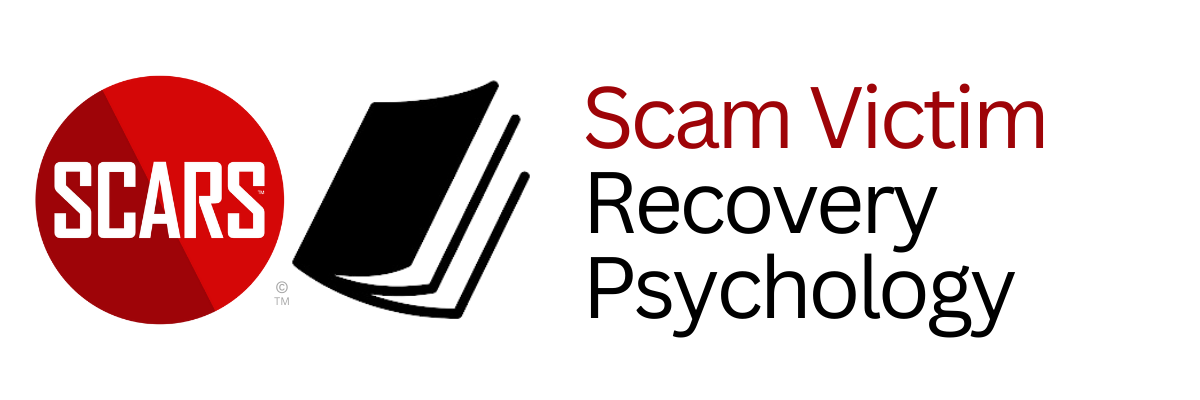
Your Repressed & Compartmentalized Demons in Your Mind: The Psychological Need to Break the Lock on Buried Trauma
Everyone has their demons, everyone carries memories that hurt. Some of these are ordinary disappointments or regrets, but others are wounds so deep that you bury them in the furthest chambers of your mind. You may think you have locked them away for good, convinced that by hiding them you are protecting yourself from pain. Yet what lives in the dark does not stay quiet. Traumatic memories that are forced down and never faced do not fade; they grow in the silence, feeding on your soul, becoming demons that whisper, twist, and weaken your spirit.
You may feel their weight as anxiety without cause, sudden anger that surprises you, or deep sadness that does not match the moment. These are the voices of what you tried to bury. The human mind is not built to compartmentalize forever. You can lock doors in your psyche, but you cannot erase what is behind them. The cost of this suppression is heavy: broken relationships, stalled recovery, chronic stress, and a sense of inner emptiness.
Facing your demons means unlocking those hidden doors, naming what you once feared, and allowing light to touch the wounds. It is not about glorifying suffering but about reclaiming power. To release your demons is to stop them from feeding silently on your soul and to transform them into something you can finally understand, express, and move beyond.
The Nature of Demons in the Mind
When you suppress trauma, your mind treats it as unfinished business. The nervous system continues to respond as if the danger is ongoing. The memory does not file itself neatly in the past; instead, it floats like an open wound. You may believe you have hidden it, yet your body remembers, your dreams echo, and your behaviors reflect the buried truth.
These unspoken traumas become demons, as vile and ugly as you can imagine. They are not imaginary; they are your pain, your grief, your shame, clothed in the symbols of your unconscious. They do not sit quietly. They whisper judgments, they stir nightmares, and they drive self-destructive choices. You may hear them in the thought “I am not enough or I can never trust anyone again.” The demon metaphor fits because these inner forces act like something alien, feeding on you, draining you, and demanding secrecy.
When demons remain unnamed, they hold power. Naming them strips away their shadowy strength. Speaking the truth of your trauma takes what was hidden and forces it into the light, where it can no longer grow unchecked. The act of expression transforms a demon from a haunting presence into a wounded part of you that can be cared for, healed, and integrated.
The Dangers of Compartmentalization
The Illusion of Control
You may think that sealing away trauma is a sign of strength. In reality, it is only a temporary illusion of control. Compartmentalization allows you to function in the short term, but over time the walls you build weaken. The memories leak through in moments of stress, fatigue, or intimacy. The harder you push them down, the stronger they press upward.
This illusion leads to cycles of denial and eruption. You tell yourself you are fine until the pressure becomes unbearable. Then the demon breaks through, leaving you overwhelmed and confused. By hiding pain, you do not remove it; you guarantee that it will return, often louder and more destructive than before.
The Physical Toll
Locked trauma manifests in the body. Unresolved stress increases cortisol levels, disturbs sleep, weakens immunity, and contributes to chronic conditions such as hypertension, digestive issues, and autoimmune flare-ups. The body keeps score even when the conscious mind pretends nothing is wrong.
You may notice headaches, chest tightness, or stomach pain when emotions rise. These are not random. They are the body’s way of telling you that the demons you have tried to silence are clawing at the walls.
The Emotional Cost
Keeping trauma buried starves you of joy. It isolates you from yourself, creating a gap between your public face and your hidden reality. You may feel disconnected from others, ashamed of what lies behind the door, or fearful of being exposed. Relationships suffer when you cannot share your true story.
You may also notice patterns of self-sabotage: choosing unhealthy partners, avoiding opportunities, or numbing with substances or distractions. These behaviors are not flaws; they are the signs of demons feeding in the dark. They will not stop until you bring them into the open.
The Process of Releasing Demons
Naming What Was Hidden
The first step is to give shape to what you buried. This means admitting to yourself what happened and acknowledging the feelings tied to it. You may write it down, speak it aloud in therapy, or share it with a trusted person. The key is to move it from silent secrecy to expressed truth.
Naming a demon robs it of its power. When you say “I was betrayed or I was hurt,” you take ownership of the memory rather than letting it own you. You cannot change what happened, but you can refuse to let it remain an unspoken master.
Allowing Expression
Once named, the trauma must be expressed. Expression does not mean dwelling endlessly in pain. It means giving yourself permission to feel what was buried: grief, rage, shame, fear, without judgment. Tears, words, movement, and even creative expression like art or music can serve as channels for release.
When you let the demon speak, it no longer has to scream through your subconscious. It can tell its story, and once told, it begins to loosen its grip. And within days should fade away.
Creating Safe Spaces
You cannot release demons into a void; they need a container. Safe spaces such as therapy sessions, support groups, or private rituals create the boundaries that allow you to face pain without being consumed by it. A candle lit, a trusted friend listening, or a journal page waiting, all these provide the structure that makes release possible.
Without a safe container, the process can feel overwhelming. With support, you can face demons step by step, letting them emerge without destroying your sense of self.
Integration and Transformation
Releasing demons is not only about purging pain. It is about integration. Once expressed, the traumatic memory becomes part of your story rather than a secret shame. You can see how it shaped you, learn from it, and even find purpose in the strength gained through survival.
Integration turns demons into teachers. They no longer haunt you but remind you of your resilience, your boundaries, and your capacity for growth. The demon becomes a scar, a mark of survival that carries no shame.
Why Suppression Feeds the Soul’s Hunger
The metaphor of demons feeding on your soul captures the truth of suppression. When you hide trauma, you are feeding it energy every time you push it down, every time you avoid speaking, every time you deny your feelings. This constant feeding makes the demon stronger and you weaker.
Over the years, this feeding drains vitality. You may lose your sense of purpose, your joy in small moments, or your ability to trust others. It is as if the demon eats away at your soul, leaving you hollow. The only way to stop the feeding is to face the demon directly, cut off its hidden source of energy, and free yourself through expression.
The Courage to Face the Demons
Releasing demons requires courage. It is easier to pretend they are not there, to fill your life with distractions, or to hope they will fade on their own. Yet courage is not the absence of fear; it is the willingness to move through fear.
You may tremble as you open the locked door, yet every step into the darkness brings you closer to freedom. Courage means trusting that you can survive the storm of emotions that come with release. It means believing that your soul is stronger than the demons that have fed upon it.
Steps Toward Release
- Acknowledge that suppression is not working. Notice the signs, physical stress, emotional numbness, and destructive patterns that reveal the demon’s presence.
- Name what was hidden. Speak or write the truth of your trauma.
- Find a safe space for expression. Choose therapy, trusted friends, or personal rituals.
- Allow yourself to feel. Permit grief, rage, shame, or fear to surface without shame.
- Integrate the memory. Reframe it as part of your story, not the whole of it.
- Continue the practice. Releasing demons is not a single act but an ongoing commitment to honesty and expression.
These steps are not linear; they may repeat, circle back, or unfold unevenly. Each act of naming and expression weakens the demon’s hold and strengthens your soul.
Conclusion
You cannot hide demons forever. The traumas you bury remain alive in the shadows, feeding on your energy and shaping your behaviors. They whisper lies, disrupt peace, and drain your vitality. Compartmentalization may feel safe, but it is only temporary. The locked doors eventually break, often in destructive ways.
Releasing your demons means naming them, expressing them, and giving them safe passage into the light. It means allowing the feelings you once buried to be felt, not forever, but long enough for them to lose their power. It means creating spaces where pain can be spoken without fear, and where you can integrate your story rather than hide it.
The metaphor of demons is fitting because trauma behaves like a creature feeding on your soul. It grows in silence, it thrives on secrecy, and it weakens you as long as you deny its existence. To release your demons is to starve them of energy, reclaim your voice, and transform them into scars of survival rather than wounds of shame.
This process is not easy, yet it is necessary. When you face the demons and speak their names, you stop living as their host and start living as your own whole self again. The path is through expression, not avoidance. Each word spoken, each tear shed, each truth admitted is a step toward freedom. Your demons are not the end of your story. They are the beginning of your transformation into someone stronger, more authentic, and no longer haunted.
Glossary
- Acknowledgment — The conscious step of admitting that repression and avoidance are not effective, and recognizing the emotional, physical, or behavioral signs of hidden trauma.
- Allowing Expression — The process of permitting grief, rage, shame, or fear to emerge and move through you without judgment, giving trauma a voice.
- Anxiety — A common symptom of buried trauma that surfaces as persistent worry, unease, or fear without clear cause.
- Body Keeps Score — The idea that unresolved trauma is stored physically, showing itself through tension, pain, or illness.
- Broken Relationships — The damage to trust and intimacy that occurs when suppressed trauma creates emotional distance.
- Compartmentalization — The defense mechanism of mentally sealing off trauma into hidden “rooms” in the mind in order to function in daily life.
- Courage — The willingness to face fear directly and open the locked doors of suppressed memory in order to heal.
- Demon Metaphor — The symbolic framing of repressed trauma as parasitic entities that whisper lies, feed on the soul, and weaken the self until named and released.
- Denial and Eruption Cycle — The repeating pattern where hidden trauma is ignored until it breaks through in overwhelming emotional outbursts.
- Emotional Cost — The depletion of joy, authenticity, and connection caused by keeping trauma hidden from others and yourself.
- Expression — The act of giving form to buried trauma through words, writing, tears, movement, or creative outlets.
- Facing Demons — The act of confronting suppressed trauma directly, naming it, and choosing to process it instead of hiding.
- Grief — The deep sorrow that surfaces when loss or betrayal trauma is finally allowed into awareness and expression.
- Hidden Doors — The metaphor for the mental barriers that keep traumatic memories locked away from conscious thought.
- Illusion of Control — The false belief that sealing trauma away represents strength, when in fact it only postpones its return.
- Inner Voice — The subconscious dialogue of suppressed trauma, often heard as harsh self-judgments such as “I am not enough.”
- Integration — The process of weaving once-buried trauma into your personal story so that it becomes a scar of survival rather than a secret wound.
- Isolation — The separation from others that develops when hidden pain prevents authentic sharing and connection.
- Locked Trauma — Memories or experiences stored away through suppression, which continue to influence thoughts and behaviors.
- Naming — The act of identifying and labeling suppressed trauma clearly, stripping it of secrecy and hidden control.
- Nightmares — Dreams where demons of repressed trauma reveal themselves symbolically, often through frightening or unsettling imagery.
- Physical Toll — The bodily consequences of unresolved trauma, including fatigue, headaches, insomnia, and stress-related illnesses.
- Repression — The unconscious act of burying traumatic experiences to avoid psychological pain.
- Safe Space — An intentional environment, such as therapy, rituals, or trusted relationships, that allows suppressed emotions to surface without overwhelming you.
- Scar — The symbol of a healed wound, representing integrated trauma that no longer feeds on the soul.
- Self-Sabotage — Destructive behaviors, such as avoiding opportunities or choosing unhealthy partners, that arise from hidden demons.
- Shame — A toxic emotion often carried by suppressed trauma, creating beliefs such as “I deserved this” or “I am broken.”
- Soul Feeding — The metaphorical process by which suppressed trauma drains your vitality and weakens your inner life when kept hidden.
- Steps Toward Release — The practical sequence of acknowledgment, naming, expression, safe containment, and integration that frees the self from suppressed demons.
- Suppression — The conscious or unconscious effort to push down traumatic memories, deny their impact, and prevent them from surfacing.
- Transformation — The shift in identity and strength that occurs when demons are released and trauma becomes a source of resilience.
- Trauma — A deeply distressing or disturbing experience that overwhelms coping capacity and leaves psychological, emotional, and physical imprints.
- Unfinished Business — The state of unresolved trauma in which the nervous system responds as though the original threat is still present.
Author Biographies
-/ 30 /-
What do you think about this?
Please share your thoughts in a comment below!
TABLE OF CONTENTS
- Your Repressed & Compartmentalized Demons in Your Mind: The Psychological Need to Break the Lock on Buried Trauma
- Your Repressed & Compartmentalized Demons in Your Mind: The Psychological Need to Break the Lock on Buried Trauma
- The Nature of Demons in the Mind
- The Dangers of Compartmentalization
- The Process of Releasing Demons
- Integration and Transformation
- Why Suppression Feeds the Soul’s Hunger
- The Courage to Face the Demons
- Steps Toward Release
- Conclusion
- Glossary
CATEGORIES
![NavyLogo@4x-81[1] Releasing Your Demons - Compartmentalized Traumatic Memories Will Haunt You - 2025](https://scamsnow.com/wp-content/uploads/2025/04/NavyLogo@4x-811.png)
ARTICLE META
Important Information for New Scam Victims
- Please visit www.ScamVictimsSupport.org – a SCARS Website for New Scam Victims & Sextortion Victims.
- SCARS Institute now offers its free, safe, and private Scam Survivor’s Support Community at www.SCARScommunity.org – this is not on a social media platform, it is our own safe & secure platform created by the SCARS Institute especially for scam victims & survivors.
- SCARS Institute now offers a free recovery learning program at www.SCARSeducation.org.
- Please visit www.ScamPsychology.org – to more fully understand the psychological concepts involved in scams and scam victim recovery.
If you are looking for local trauma counselors, please visit counseling.AgainstScams.org
If you need to speak with someone now, you can dial 988 or find phone numbers for crisis hotlines all around the world here: www.opencounseling.com/suicide-hotlines
Statement About Victim Blaming
Some of our articles discuss various aspects of victims. This is both about better understanding victims (the science of victimology) and their behaviors and psychology. This helps us to educate victims/survivors about why these crimes happened and not to blame themselves, better develop recovery programs, and help victims avoid scams in the future. At times, this may sound like blaming the victim, but it does not blame scam victims; we are simply explaining the hows and whys of the experience victims have.
These articles, about the Psychology of Scams or Victim Psychology – meaning that all humans have psychological or cognitive characteristics in common that can either be exploited or work against us – help us all to understand the unique challenges victims face before, during, and after scams, fraud, or cybercrimes. These sometimes talk about some of the vulnerabilities the scammers exploit. Victims rarely have control of them or are even aware of them, until something like a scam happens, and then they can learn how their mind works and how to overcome these mechanisms.
Articles like these help victims and others understand these processes and how to help prevent them from being exploited again or to help them recover more easily by understanding their post-scam behaviors. Learn more about the Psychology of Scams at www.ScamPsychology.org
SCARS INSTITUTE RESOURCES:
If You Have Been Victimized By A Scam Or Cybercrime
♦ If you are a victim of scams, go to www.ScamVictimsSupport.org for real knowledge and help
♦ SCARS Institute now offers its free, safe, and private Scam Survivor’s Support Community at www.SCARScommunity.org/register – this is not on a social media platform, it is our own safe & secure platform created by the SCARS Institute especially for scam victims & survivors.
♦ Enroll in SCARS Scam Survivor’s School now at www.SCARSeducation.org
♦ To report criminals, visit https://reporting.AgainstScams.org – we will NEVER give your data to money recovery companies like some do!
♦ Follow us and find our podcasts, webinars, and helpful videos on YouTube: https://www.youtube.com/@RomancescamsNowcom
♦ Learn about the Psychology of Scams at www.ScamPsychology.org
♦ Dig deeper into the reality of scams, fraud, and cybercrime at www.ScamsNOW.com and www.RomanceScamsNOW.com
♦ Scam Survivor’s Stories: www.ScamSurvivorStories.org
♦ For Scam Victim Advocates visit www.ScamVictimsAdvocates.org
♦ See more scammer photos on www.ScammerPhotos.com
You can also find the SCARS Institute’s knowledge and information on Facebook, Instagram, X, LinkedIn, and TruthSocial
Psychology Disclaimer:
All articles about psychology and the human brain on this website are for information & education only
The information provided in this and other SCARS articles are intended for educational and self-help purposes only and should not be construed as a substitute for professional therapy or counseling.
Note about Mindfulness: Mindfulness practices have the potential to create psychological distress for some individuals. Please consult a mental health professional or experienced meditation instructor for guidance should you encounter difficulties.
While any self-help techniques outlined herein may be beneficial for scam victims seeking to recover from their experience and move towards recovery, it is important to consult with a qualified mental health professional before initiating any course of action. Each individual’s experience and needs are unique, and what works for one person may not be suitable for another.
Additionally, any approach may not be appropriate for individuals with certain pre-existing mental health conditions or trauma histories. It is advisable to seek guidance from a licensed therapist or counselor who can provide personalized support, guidance, and treatment tailored to your specific needs.
If you are experiencing significant distress or emotional difficulties related to a scam or other traumatic event, please consult your doctor or mental health provider for appropriate care and support.
Also read our SCARS Institute Statement about Professional Care for Scam Victims – click here
If you are in crisis, feeling desperate, or in despair, please call 988 or your local crisis hotline – international numbers here.
More ScamsNOW.com Articles
A Question of Trust
At the SCARS Institute, we invite you to do your own research on the topics we speak about and publish. Our team investigates the subject being discussed, especially when it comes to understanding the scam victims-survivors’ experience. You can do Google searches, but in many cases, you will have to wade through scientific papers and studies. However, remember that biases and perspectives matter and influence the outcome. Regardless, we encourage you to explore these topics as thoroughly as you can for your own awareness.





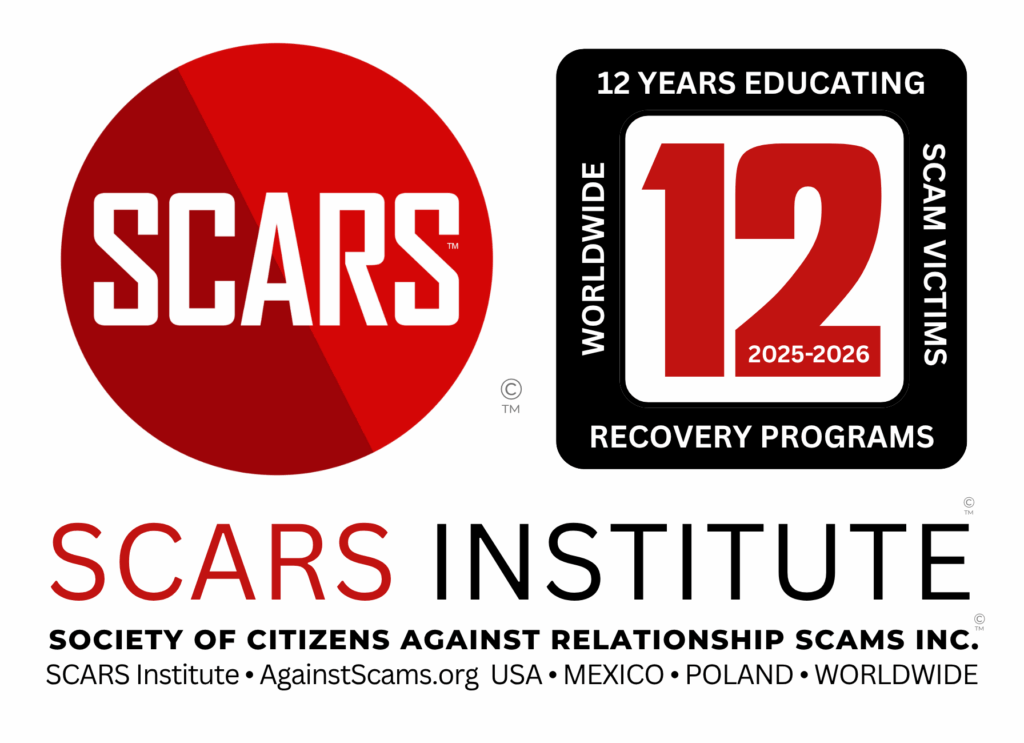







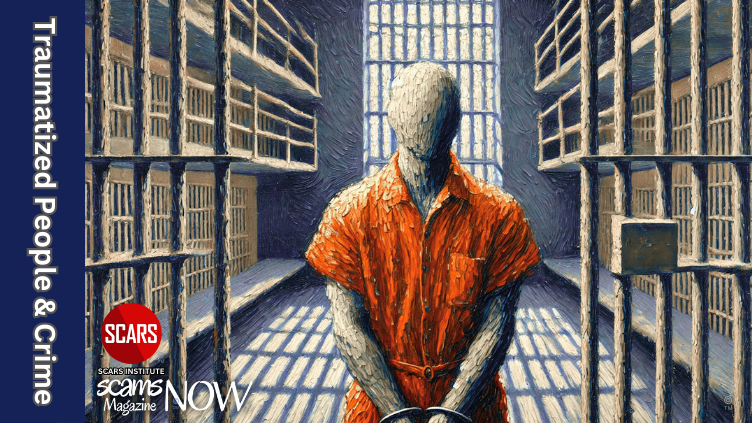



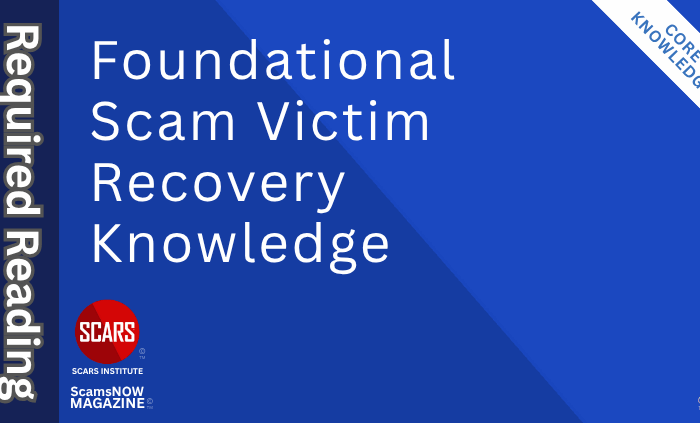

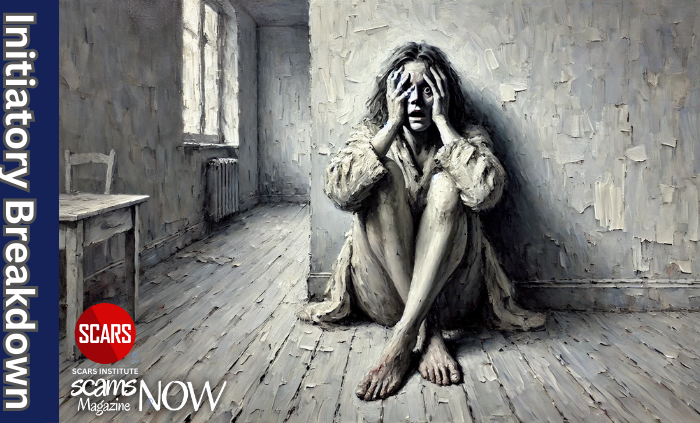


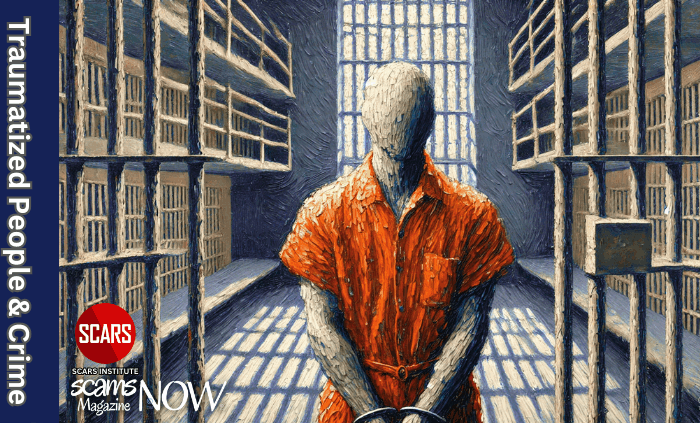

![scars-institute[1] Releasing Your Demons - Compartmentalized Traumatic Memories Will Haunt You - 2025](https://scamsnow.com/wp-content/uploads/2025/04/scars-institute1.png)
![niprc1.png1_-150×1501-1[1] Releasing Your Demons - Compartmentalized Traumatic Memories Will Haunt You - 2025](https://scamsnow.com/wp-content/uploads/2025/04/niprc1.png1_-150x1501-11.webp)
